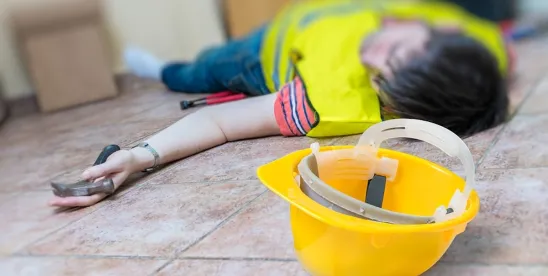On November 8, 2024, in Marina v. Bama Reinforcing, LLC, the Alabama Supreme Court addressed a trial court’s directed verdict on an injured construction worker’s negligence action. The worker was employed as a concrete finisher by the contractor on the new FBI building being constructed at Redstone Arsenal outside of Huntsville, Alabama. While working on site, the worker stepped on a piece of a metal chair, a component used to hold rebar in place during concrete pours, that had been cut and left on the ground. The piece of chair penetrated the worker’s boot and injured his foot.
The worker filed a negligence action against the subcontractor responsible for the rebar installation on the project. The subcontract required the subcontractor to clean its work areas and keep them free from rubbish and debris. Testimony at trial revealed that the subcontractor had not been present at the project the day the injury occurred, and the subcontractor was the only company on site who installed and handled concrete chairs as part of their work. A witness for the subcontractor also testified that its employees did not cut chairs as part of their work on the project.
At the close of the evidence, the subcontractor sought a directed verdict dismissing the negligence action. The subcontractor argued that there was insufficient evidence to establish that the subcontractor was responsible for having cut the chair and failing to clean the chair debris from the site. According to the subcontractor, it was “pure speculation at best” that the subcontractor’s conduct caused the piece of chair to be on the ground at the job site. In an oral ruling, the trial judge granted the subcontractor’s motion for directed verdict emphasizing three key facts in support of its decision that the subcontractor could not be held responsible for the injury: “(1) [the subcontractor] did not cut chairs; (2) [the subcontractor] had completed its work on the concrete slab Marina was working on at least the day before the accident; and (3) all of the contractors [] had a duty to clean up the job site.”
The Alabama Supreme Court overturned the trial court’s ruling because it failed to follow the appropriate standard of viewing the facts in the light most favorable to the plaintiff worker. Specifically, the supreme court faulted the trial court for not addressing the testimony that the subcontractor was the only contractor on site who used the metal chairs and for its flawed reasoning as to the different contractors’ cleaning obligations on the project. The court summed up its analysis as follows:
There is a logical sequence in the evidence indicating that only [the subcontractor] used chairs, that its employees had worked in the same area the day before [the worker’s] accident, and that it had a clear duty to clean up that area upon the completion of its work. Thus, the evidence points to [the subcontractor’s] negligent cleanup being the reason the piece of chair was left on the ground in the work area for [the plaintiff] to step on. That [the contractor’s] employees also could be included in the causal chain because the job site had not been cleared of all debris and rubbish throughout the workday before [the plaintiff’s] accident does not exonerate [the subcontractor].
The general rule is that it is no defense, in actions for injuries resulting from negligence, that the negligence of third persons contributed to cause the injury to the plaintiff if the negligence of the defendant was an efficient cause, without which the injury would not have occurred. Stated differently, where a defendant is guilty of negligence which causes an injury, and the plaintiff is free from negligence contributing thereto, the fact that the negligence of a third person also contributed does not relieve the defendant from liability for his negligence.
The evidence indicates that [the subcontractor’s] negligent cleanup initially allowed the piece of chair to be present in the work area. Therefore, it is possible for [the subcontractor] to be held liable for its alleged negligence. Accordingly, the trial court erred in entering a judgment as a matter of law in [the subcontractor’s] favor. (internal citations omitted).
The Alabama Supreme Court seemed concerned that the trial court was inserting itself as the factfinder into the case and misapplying or misinterpreting the relevant facts. The case highlights the challenges courts face when trying to rule as a matter of law with respect to legal issues that require a fact-intensive inquiry. The subcontractor will likely face a re-trial and all the concomitant fees and expenses.






 />i
/>i

